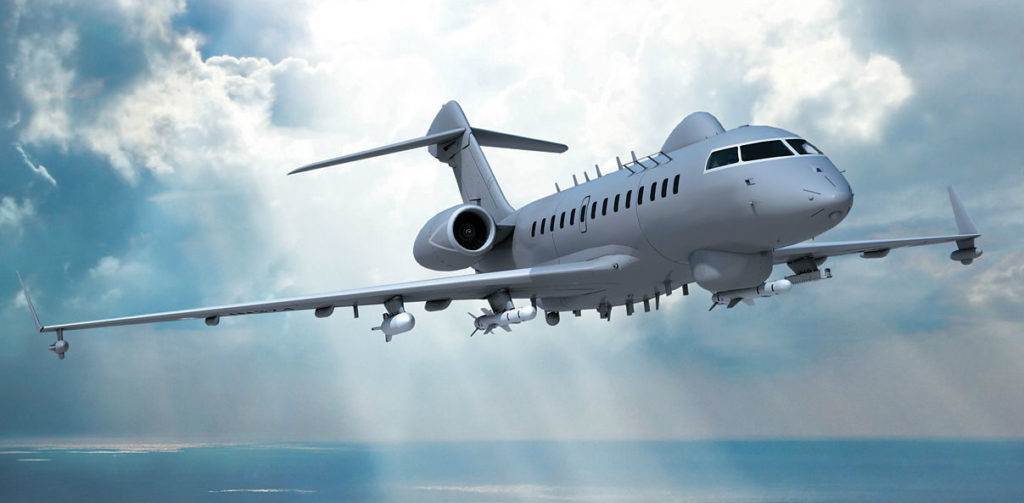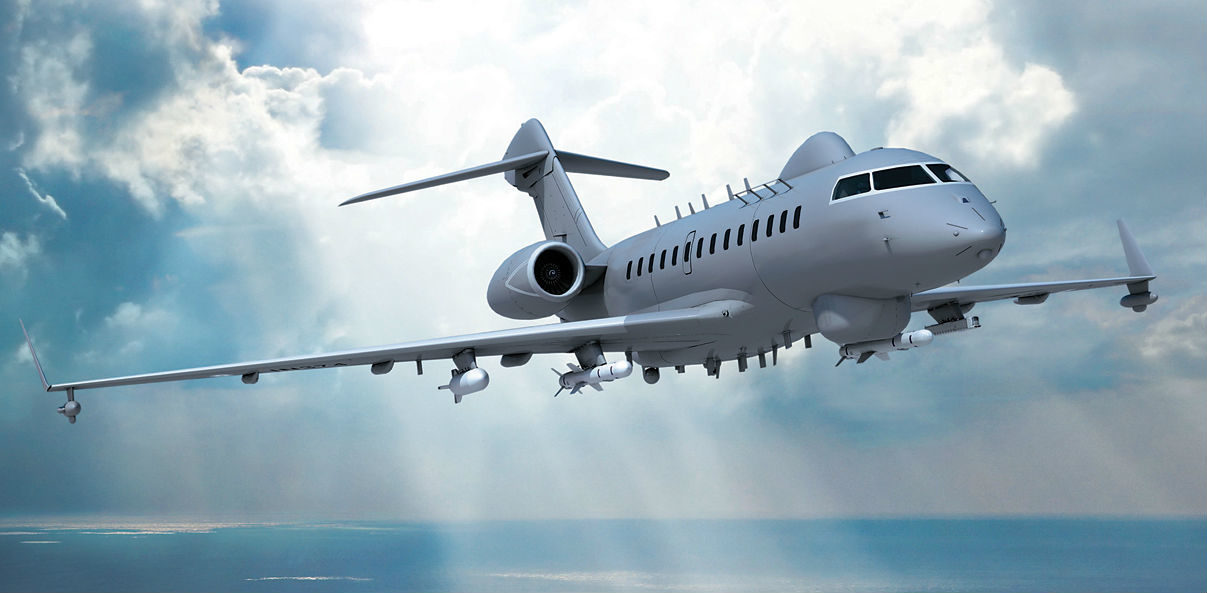Estimated reading time 7 minutes, 6 seconds.
Sometime in the late 2020s, the Royal Canadian Air Force (RCAF) will launch the formal process to find a replacement for the CP-140 Aurora, a long-range maritime patrol aircraft that in recent years has transformed from a formidable submarine hunter to a powerful overland intelligence, surveillance, reconnaissance (ISR) and targeting platform.

Under a four-phased upgrade program known as the Aurora Incremental Modernization Project, the fleet of 14 Lockheed Martin aircraft has acquired extensive new mission computers and sensor systems to gather intelligence and targeting information and share that data, including streaming video, with other aircraft, ground or naval forces, and operational headquarters well beyond line-of-sight.
It’s a capability of which the RCAF is justly proud–officers have called it “world-class” in recent public presentations and interviews. As of mid-February, two Auroras had conducted 719 reconnaissance missions over Iraq and Syria on Operation Impact.
But even with new mission systems and structural upgrades, the CP-140 is expected to reach the end of its service life by the mid 2030s. The air force has laid out the broad strokes of a program expected to exceed $1.5 billion for a multi-mission aircraft that would deliver a long-range manned aircraft with C4 (command, control, communications and computers) and ISR systems capable of “fully integrating with other ISR assets” that will undoubtedly attract significant industry interest.
RCAF commander LGen Mike Hood, however, has made no secret of his preference. In appearances before government committees and in an interview with Skies, he has argued persuasively for a Canadian-built aircraft such as the Bombardier C Series or Q400 and urged his team “to imagine how we continue to develop world-leading [anti-submarine warfare] capability…[in] a Canadian platform.”
The RCAF is not alone in its interest to modify a Bombardier commercial aircraft for military purposes. In recent years, the Montreal-based company has signed a spate of deals with large international manufacturers to convert its business and passenger jets.
At Aero India in February 2015, Israel Aerospace Industries (IAI) and its subsidiary ELTA unveiled a maritime patrol, anti-submarine and anti-surface warfare aircraft based on a Global 5000 business jet, configured with ELTA’s ELI-3360 mission system and lightweight anti-submarine torpedoes and anti-ship missiles. The two companies previously modified and weaponized a Q400 turboprop.
In June 2015, Lockheed Martin and Raytheon teamed with Bombardier to offer the Global platform for the United States Air Force’s Joint Surveillance Target Attack Radar System (JSTARS) program, which is retiring its fleet of E-8C aircraft built on the Boeing 707 platform. Bombardier’s Global 6000 was previously selected by the USAF for its Battlefield Airborne Communications Node program, an airborne communications relay system.
More recently, at the Singapore Airshow in February 2016, Saab and Bombardier expanded their partnership, offering Saab’s Swordfish maritime mission system on either a Global 6000 or Q400. The former would be armed with Saab’s RBS-15 anti-ship missile and a lightweight torpedo, while the latter would carry just the torpedo. Four months earlier at the Dubai Airshow in November 2015, the two companies announced that the United Arab Emirates would be the launch customer for a Global 6000-based multirole airborne early warning (AEW) surveillance platform known as GlobalEye.
Partnerships are just part of the business development picture. Bombardier has also struck out on its own with the venerable Challenger business jet, promoting it as a multirole special mission aircraft for surveillance, medical evacuation, weather research, aerial photography, VIP transport or search and rescue.
Bombardier recently delivered two specialized Challenger 605 aircraft to the Hong Kong Government Flying Service for search and rescue. And at the 2016 Farnborough Airshow, the company revealed a Q400 Multi-Role for firefighting as well as cargo and passenger transport, which can also carry weapons if required.
(Others have shown interest in modifying the Challenger. At the 2012 Farnborough Airshow, Boeing unveiled a maritime surveillance demonstration aircraft based on the 605 or 650 platform, fitted with much of the same mission systems as the larger Boeing P-8A Poseidon, a 737 airframe, but without the weapons.)
While there is no question special mission aircraft represent a burgeoning market as countries, especially in the Asia-Pacific, seek to monitor their maritime approaches, finding the “sweet spot” of aircraft size, capability, payload, and lifecycle costs is a constant balancing act that often requires a certain amount of compromise, said Stephane Villeneuve, Bombardier’s vice president for specialized aircraft.
That will be true for the RCAF as it analyzes the best option to replace the CP-140, a variant of Lockheed Martin’s P-3 Orion currently in service with 22 operators in 17 countries, according to GlobalSecurity.org.
“The market is not so much a straight replacement for CP-140 or P-3, it’s more about replacing P-3s in general around the world with various types of solutions,” Villeneuve told Skies in a recent interview. “There are no straight replacements. Boeing will argue that a P-8 replaces a P-3…but a lot of countries don’t want to spend that type of money for this aircraft, so you have a lot of different players that have come up with various solutions to replace P-3s.”
If multirole is the aim for most customers, then mission systems are the primary driver, more so than the platform itself. But certain aircraft performance criteria such as endurance are still “key discriminators,” he said.
“People want to do as much as possible with one aircraft. Everyone says that, but it really is a strong driving factor behind the decisions people make now. [But] there is not one platform that is adequately suited to everything. What we see now is a customer with a very long list of requirements and they try to find the best compromise with one platform that will allow them to do (almost) everything.”
Adding weapon systems requires substantial structural changes, but adopting common or modular mission systems for a baseline platform has been one way to manage costs and ensure versatility, a strategy Villeneuve said more companies are promoting. “We are starting to see a shift: people are starting to look at commercial platforms as the common baseline.”
With aircraft for every segment of the market, Bombardier is also leveraging the knowledge that comes from numerous customized modifications, such as where best to mount sensors.
“It sounds obvious but typically that is not what has happened,” Villeneuve explained. “We tend to look at it from a single program basis and then start from scratch. We are trying to move away from that, with some fairly good successes. [Y]ou can find a lot of commonalities between different missions.”
The shift to a commercial platform with most of its necessary certification obviously speeds up the procurement process–in the case of the Challenger Multi-Role, “you get the capability on your tarmac within two years–but the common baseline also means “you buy into a support network that has been established for hundreds of aircraft,” he observed. “It saves you a lot of money up front.”
Bombardier is still at the show-and-tell stage with the RCAF, highlighting the various options it could propose. But the company is hoping its development work with various prime integrators will help the air force identify an ideal solution.
“It’s probably not going to be a straight replacement of aircraft, so [we are] looking at how we could link up their future needs with the potential platforms we could offer,” Villeneuve said. “Is it a matter of developing the C Series for that mission? Or looking at what is already on the Global aircraft that has been proposed by various integrators? Or does a Q400 become a straight replacement? Or could you have a mixed capability? We want to show the breadth of capability we can provide.”
Whatever the RCAF eventually decides to do for its multi-mission aircraft, having the Canadian military as a customer “is crucial,” he said. “When you develop something like that…the first question [potential customers] will ask is, ‘Has your government bought it?’ A homegrown solution for the RCAF gives us the strength to go to the export market. It gives us the credibility.”
Chris Thatcher is an aerospace, defence and technology writer and a regular contributor to Skies.

